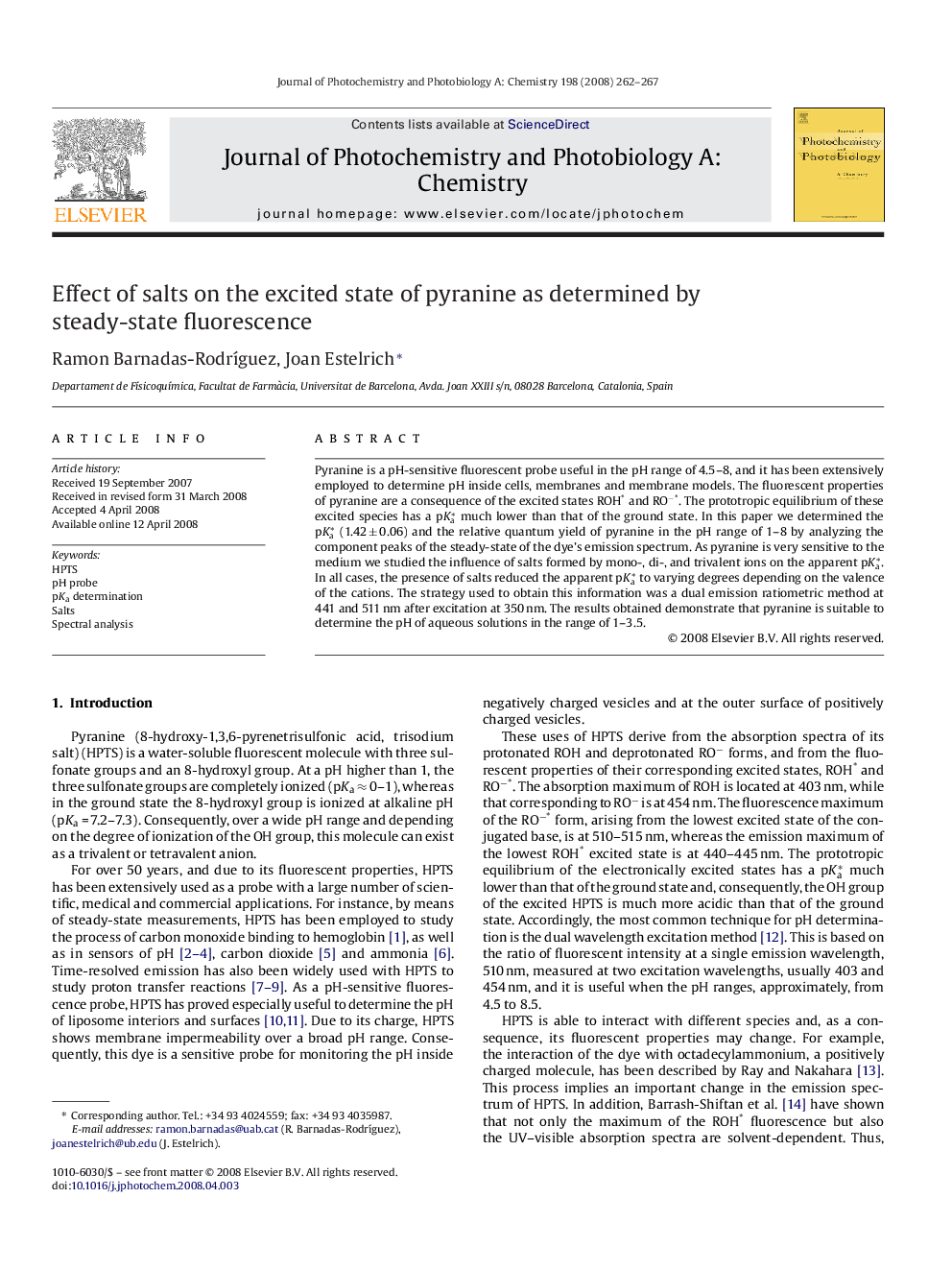| Article ID | Journal | Published Year | Pages | File Type |
|---|---|---|---|---|
| 27493 | Journal of Photochemistry and Photobiology A: Chemistry | 2008 | 6 Pages |
Pyranine is a pH-sensitive fluorescent probe useful in the pH range of 4.5–8, and it has been extensively employed to determine pH inside cells, membranes and membrane models. The fluorescent properties of pyranine are a consequence of the excited states ROH* and RO−*. The prototropic equilibrium of these excited species has a pKa* much lower than that of the ground state. In this paper we determined the pKa* (1.42 ± 0.06) and the relative quantum yield of pyranine in the pH range of 1–8 by analyzing the component peaks of the steady-state of the dye's emission spectrum. As pyranine is very sensitive to the medium we studied the influence of salts formed by mono-, di-, and trivalent ions on the apparent pKa*. In all cases, the presence of salts reduced the apparent pKa* to varying degrees depending on the valence of the cations. The strategy used to obtain this information was a dual emission ratiometric method at 441 and 511 nm after excitation at 350 nm. The results obtained demonstrate that pyranine is suitable to determine the pH of aqueous solutions in the range of 1–3.5.
